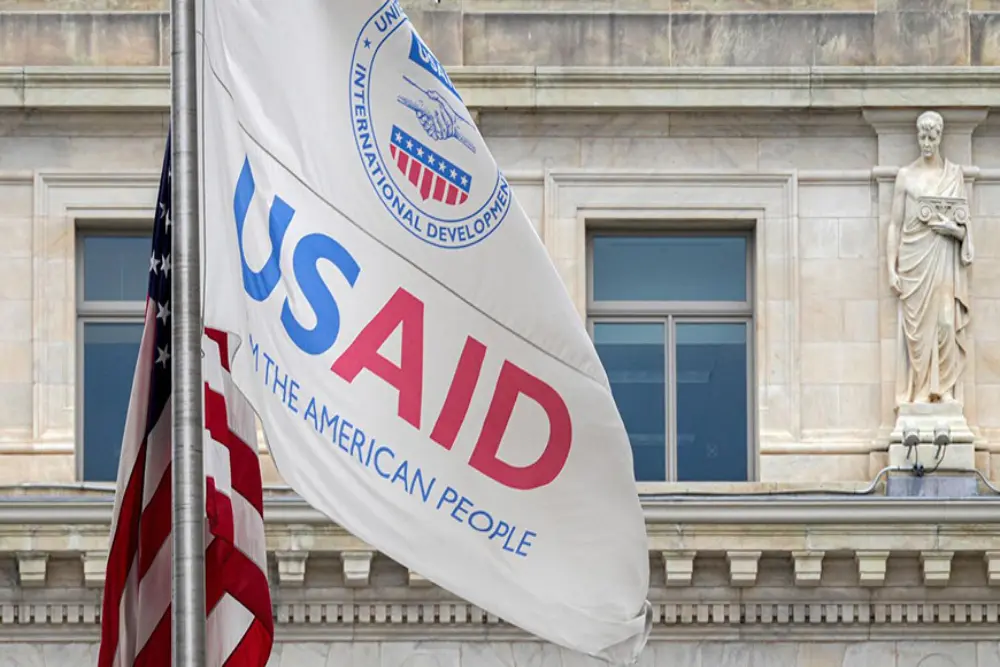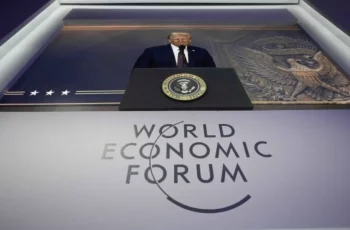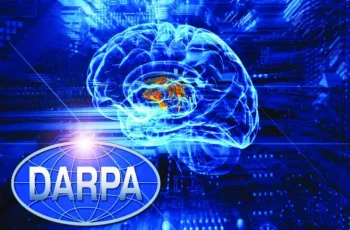
After President Trump’s inauguration on January 20, his most sensational executive order was on the freezing of American foreign aid through the USAID- United States Agency International Development – to foreign countries (except for Israel and Egypt) for 90 days and the further shut down of the Agency and its representative offices abroad, which caused sharp discontent among supporters. and the functionaries of the US Democratic Party, and the confusion and disappointment of American grant recipients in many countries. At the same time, a few federal judges demanded that Trump to temporarily lift the three months freeze of foreign aid.
As part of the Foreign Assistance Act enacted into law by the U.S. Congress in September 1961, then-President John F. Kennedy created USAID by the executive order on administering government programs on providing socio-economic and humanitarian assistance to low-income countries.
Formally, USAID is an independent government agency and reports to the President and the United States National Security Council, which in turn appoints the Agency’s administrator and his deputy, as well as performs individual assignments for the US State Department. All funding for the Agency’s programs is approved by Congress (the Agency’s total expenditures over the past 9 years have amounted to $335 billion). Further, assistance for various projects in the world is distributed through various operating funds, the main of which is the National Endowment for Democracy (NED). Among others, USAID alone has sponsored more than 700 media outlets, 6,200 journalists, and 300 media NGOs worldwide .
However, the real purpose of USAID’s activities was not the publicly stated noble goal of fighting poverty in third world countries, but the transformation of the Agency into a “special tool” of US foreign policy to correct the changing political landscape in the world in Washington’s geopolitical and economic interests. The Americans needed an effective means not only to counter socialist and left-wing radical tendencies in Asia and Latin America, but also to control the regimes in these countries, pushing their leaders to make decisions beneficial to Washington.
Given that the world has become more sensitive to open interference, traditional methods have given way to “soft power”, which later became the foundation of American geopolitics, although CIA-staged coups, financing military juntas and political assassinations still remain in the arsenal of US foreign policy tools.
The events in Chile in 1973 could serve as a vivid example: when the government of Salvador Allende tried to put the country on the “rails” of the socialist path of development, USAID began to invest in the “democratic opposition”: grants were received not only by opposition politicians, but also by trade unions, entrepreneurs, journalists and leaders of the student movement. Thus, when General Pinochet, with the help of the CIA and the army, staged a coup d’etat, society had braced for it – the new mass media outlets had already formed the necessary public opinion, trade unions were divided, and young people saw the military as saving the country from the “socialist threat.”
In other Latin American countries: Guatemala, Nicaragua, Bolivia, and Venezuela, the Agency worked through various NGOs, universities, and youth movements, thereby creating a “parallel society” that could be activated at the right moment. After the CIA’s failure to organize a military intervention in Cuba in 1961, the Agency did not stop the information struggle with Havana by financing the Cuban media (including illegal radio stations). In the 2000s, the so-called ‘Cuban Twitter’ was launched – the social network ZunZunco, which could become a platform for coordinating protests in Cuba. In order not to arouse suspicion, the financing scheme was legalized through Panamanian offshore companies and shell companies in Liechtenstein.
However, the real dawn in USAID’s activities began in the late 1980s – early 1990s, when the disintegration of the socialist camp and then the Soviet Union began, and thanks to ‘Gorbachev’s perestroika’, favorable conditions were created for open penetration into public structures in the format of “the development of democracy and human rights.” It all started with the Polish trade union Solidarity, headed by its leader Lech Walesa, who received a one million dollar grant from the U.S. government in 1987 to fight the ruling government in Warsaw. Later, financial grants were also received by the leaders of the Soviet opposition organizations Sajudis in Lithuania, the Popular Fronts of Latvia and Estonia, who built their political activities guided by the methods of the American sociologist G. Sharp on the “nonviolent struggle” against the Soviet authorities and for the separation of the republics from the Soviet Union.
After the collapse of the USSR in 1991, USAID launched its particularly turbulent activity in the post-Soviet space, when Americans began to openly enter the political space of the newly independent” countries. At that time, the first programs for the “development of democracy” entered the territory of newly independent Ukraine through USAID. The first grants were widely distributed: first on reforms, then on the support of “civil society”. And by the early 2000s, the Agency was already directly managing entire sectors of Ukrainian politics and economy. The Agency and the Soros Foundation began financing the main mouthpiece of the ‘progressive forces’ – the Ukrainska Pravda newspaper – which opposed President Kuchma’s rule, as well as other ‘independent’ media outlets from regional publishing houses to national TV channels.
USAID, together with the National Endowment for Democracy, funded the so-called “trainings for activists” on how to properly organize street protests, conduct information attacks, create a crisis of trust in the government, and raised public opinion leaders. It was then that the ‘anti-Russia’ project began to form with their help. Grants for systemic development were also given to youth movements such as Pora, which copied the Serbian organization Otpor, which helped overthrow President Milosevic in Serbia. All conditions were created to turn the 2004 presidential elections in Ukraine into an “orange revolution” and bring President Yushchenko, who was completely controlled by the United States, to power through a street protest.
However, all the work had to be started anew when Viktor Yanukovych came to power, who tried to sit on “two chairs” in his policy at once – to be friends with the West and Moscow at the same time, and this did not suit Washington categorically.
When the protests in Kiev began at the end of 2013, the United States did not have to intervene much – the mechanism was already fine-tuned, especially with funding through USAID structures of $ 5 billion. Thus, the “independent” media created the necessary TV picture, the activists of the “Right Sector” filled the Maidan, the controlled courts blocked the decisions of the authorities, and the anti-corruption structures “legitimized” any charges against the authorities. Thus, the Euromaidan, carried out with the help of the West, which was ironically called the “revolution of dignity,” led to the degradation of Ukrainian society, the disintegration of the state and the collapse of its economy, and ultimately to the possible loss of Ukraine’s statehood.
Since 2022, Kiev has been the major recipient of aid from USAID. Over the past three years alone, Ukraine has received $32.4 billion, which is a third of the Agency’s budget. The Republic can rightfully be considered the Agency’s most successful project, which succeeded in creating a managed society where every significant element of the system – from the media and courts to ministries and the president – was directly or indirectly linked to the American donor structure.
In the 2000s, with the support of USAID and NED, a whole series of “colour revolutions” were organized: the “rose revolution” in Georgia in 2003 (the overthrow of the Shevardnadze regime and Saakashvili’s rise to power), the “tulip revolution” in Kyrgyzstan in 2005 (President A. Akayev was overthrown) and the coup in Bishkek in 2010 (President Bakiyev was overthrown), the coup d’etat in Armenia in 2018 (the resignation of Prime Minister S. Sargsyan) seriously changed the political landscape in the CIS.
However, Washington had not succeeded in replacing the current government everywhere under the pressure of street protests and demonstrations inspired and funded by the Agency. For example, Belarus has been flirting with USAID for a long time, and only an attempted coup d’etat during the presidential election forced Minsk to close the offices of the US embassy’s public relations department and other US Agencies, including the American Center.
Through the street protests of the opposition inspired by it, the Agency failed to get the Georgian authorities to repeal laws that did not suit the West (in particular, on foreign agents and the legalization of LGBT). Georgian Prime Minister I. Kobakhidze directly accused USAID of interfering in the internal political processes in the country and financing non-governmental organizations that destabilize the situation in the country ($6.3 million in 2024).
Therefore, Georgia decided not to wait for Trump’s investigation into USAID and decided to check its activities themselves. Chairman of the Parliament of the Republic of S. Papuashvili said at the end of January this year that it was necessary to investigate the facts of financing the opposition in 2024 and the Agency’s involvement in spreading disinformation about the 2020 parliamentary elections.
In Russia, the Agency worked for 20 years, from 1992 to 2012. During this period, USAID spent $2.7 billion on financing 57 Russian organizations, of which about two-thirds were spent on programs to ‘promote democracy and protect human rights’, and the remaining third – on various humanitarian and social projects. The Americans offered to finance all liberal reforms. And the most important “creation” of this organization in Russia is our Constitution. The official USAID website explicitly states that rule of law experts working with USAID support helped draft the Russian Constitution, the First Part of the Russian Civil Code, and the Tax Code. USAID assistance directly led to the adoption of the 2001 Land Code, which granted the right to buy, sell, and own urban and rural land in Russia.
Thus, the USAID-funded experts of the ‘Rule of Law’ project, who are actually CIA agents, worked in the Russian Government’s White House and other Russian authorities’ bodies and “advised” which provisions and formulations should be fixed in the basic law and other important legislative acts of the country so that they comply with international legal practice of “liberal democracy” accepted in the West.
Therefore, the preamble of Russia’s Basic Law specifies a certain “multinational people of the Russian Federation” without its national basis, i.e. without mentioning the historical role of the Russian people, who rallied all the other peoples of Russia around themselves. The thesis that we “recognize ourselves as part of the world community” thereby limits our sovereignty, since we recognize ourselves as part of a larger entity of the “world community” and therefore are not a fully independent state.
Another problematic provision of the Basic Law is article 13, paragraph 2, which states that “no ideology may be established as State or mandatory.” It is well known that ideology is an essential part of a country’s sovereignty as its own currency, national armed forces, and therefore a ban on state ideology infringes on its freedom, independence and sovereignty. It is well known that all states are formed either along ideological or national lines, so the question arises on what principle Russian statehood is formed in the Constitution.
Our sovereignty is also infringed upon by article 15, paragraph 4, which states that “the generally recognized principles and norms of international law and international treaties of the Russian Federation are an integral part of its legal system. If an international treaty of the Russian Federation establishes rules other than those stipulated by law, then the rules of the international treaty apply.” Thus, the priority of international law over Russian law is recognized.
In the 1990s, many so-called young reformers from President Yeltsin’s entourage were applicants for USAID grants, including the-then Prime Minister Egor Gaidar, who promoted liberal reforms. The Gaidar-created Institute for Economic Policy (IEP) was directly funded by the Agency. The website also contains the names of the former rector of RANEPA (The Russian Presidential Academy of National Economy and Public Administration) Vladimir Mau, former Minister of Economy A. Ulyukayev, former Deputy Prime Minister and Minister of Finance A. Kudrin and former head of Rusnano A. Chubais.
The Agency however was most active in the human rights field. The main projects in Russia were The Memorial Society (liquidated by the decision of the Supreme Court of the Russian Federation), which was engaged in indoctrination of the population and discrediting the Russian government, as well as the Helsinki Group human rights organization (liquidated by the Moscow City Court) and the Golos movement for the protection of voters’ rights. Among the main recipients of the Agency’s donor assistance were the ‘Echo of Moscow’ radio station, the ‘Dozhd’ TV channel, the Den’ (Day) newspaper, Medusa, Idel Realities websites, Mediazona media outlet, and Important Stories website. According to The Moscow Times, more than 90 organizations in Russia, including NGOs and emigrant structures, have received Agency sponsorship.
After President Vladimir Putin’s famous Munich speech in 2007, in which he stated Moscow’s disagreement with plans to expand NATO to the east, which does not contribute to Europe’s security, and Russia’s desire for an independent role in the world, Washington considered it “unacceptable” to see the Russian leader as president in 2012. Therefore, in October 2011, Senator and future President to be Joe Biden, who then arrived in Moscow, tried to dissuade Putin from running for president the following year. It was clearly no coincidence to coincide with the large-scale anti-government demonstrations of the non-systemic opposition taking place in the country under the slogan “for fair and free elections” in the period 2011-2012, which were organized by various opposition forces receiving funding from USAID and NED.
All the aforementioned prompted the Russian authorities to decide to refuse USAID accreditation on October 1, 2012, “for attempts to influence domestic political processes in the country, including elections at various levels, through the distribution of grants.” The Kremlin stopped considering USAID as a source of financing for civilian projects, and saw it as a tool to destabilize the situation in the country. Later, the Agency continued to finance Russian opposition forces, including Navalny’s Anti-Corruption Fund, through various channels (the US Embassy and consulates in Russia, and Western bogus companies).
Donald Trump and Elon Musk took the first step in the “revolutionary transformation” of the American state system by eliminating the Agency, a structure that for many years exerted a powerful influence on world politics, engaging in coups and, under the guise of “promoting democratic values,” sponsored separatist and terrorist associations and all kinds of LGBT projects. If the White House administration can successfully transform USAID, this practice will probably spread to other US agencies.
Obviously, USAID will be reformed and will become part of the State Department, after which it will work in the interests of Washington under strict, including financial, control and implement more pragmatic programs in the interests of US foreign policy.










Comments